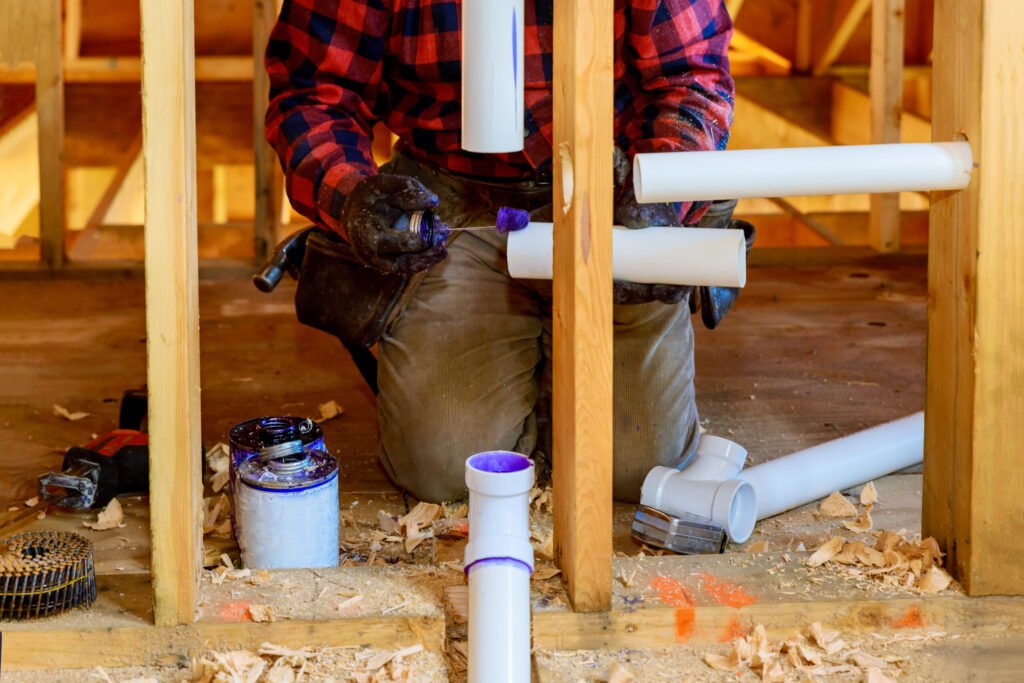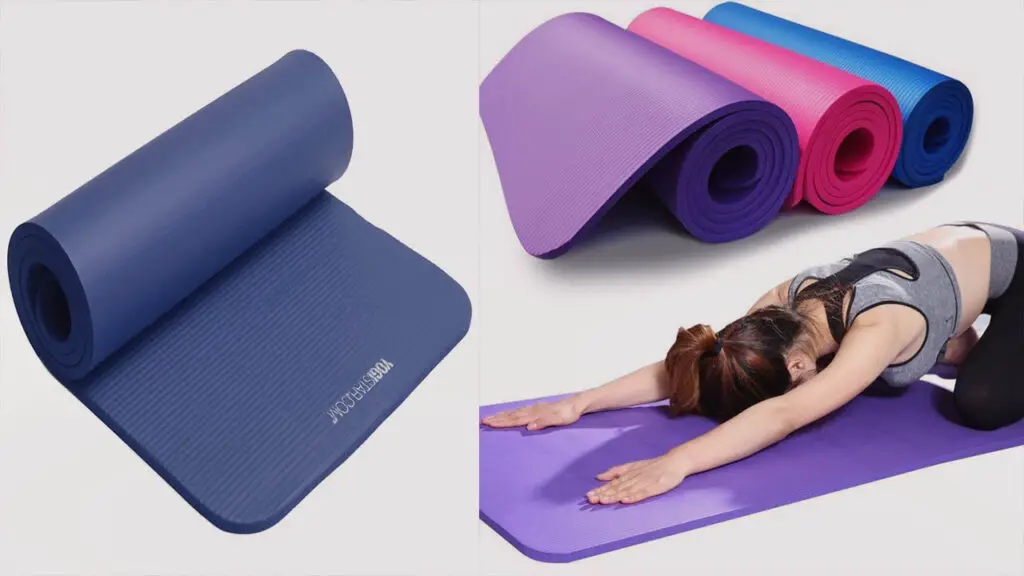To remove a glued PVC fitting, you can use a heat gun to soften the adhesive and then gently twist and pull the fitting to detach it from the pipe. Additionally, you can use a PVC cutter to carefully cut the fitting away.
It is important to work slowly and cautiously to avoid damaging the pipe. Are you dealing with a glued PVC fitting that needs to be removed? Whether it’s for repairs or renovations, knowing how to effectively remove a glued PVC fitting can be a valuable skill.
In this comprehensive guide, we will explore the step-by-step process of removing a glued PVC fitting using simple tools and techniques. By following these instructions carefully, you can successfully remove the fitting without causing damage to the surrounding pipes or fittings. Let’s dive in and learn how to accomplish this task with ease and precision.
Removing A Glued Pvc Fitting: An Overview
When it comes to removing a glued PVC fitting, understanding the bond and knowing the right techniques is crucial for a successful disassembly. In this guide, we’ll delve into the process of removing a glued PVC fitting, providing you with the necessary knowledge and steps to accomplish this task effectively.
Understanding The Bond Of Pvc Fittings
PVC fittings are bonded together using solvent cement, which creates a strong and durable connection. This bond is formed through a chemical reaction that welds the surfaces of the fittings together.
To effectively remove a glued PVC fitting, you need to break this bond without causing damage to the pipe or the fitting.
Step-by-step Guide To Removing A Glued Pvc Fitting
- Identify the Fitting: Before you start, it’s important to identify the specific PVC fitting that needs to be removed.
- Prepare the Area: Clear the area around the fitting and ensure that it is accessible.
- Heat Application: Use a heat gun to apply heat to the glued joint. Heating the joint will soften the solvent cement and make it easier to separate the fitting from the pipe.
- Twisting Motion: Once the joint is heated, use a twisting motion to carefully separate the fitting from the pipe. Be gentle to avoid damaging the pipe or the fitting.
- Clean the Surfaces: After removing the fitting, clean the surfaces of the pipe and the fitting to remove any residue left by the solvent cement.
Remember to exercise caution when using heat to soften the solvent cement, and always wear protective gear to prevent injury.

Credit: m.youtube.com
Safety Precautions For Pvc Fitting Removal
Before removing a glued PVC fitting, it’s crucial to follow the necessary safety precautions to protect yourself and ensure a smooth process. Here are some essential safety measures to keep in mind:
Ventilation And Protective Gear
When working with PVC glue and solvent, proper ventilation is essential to avoid inhaling harmful fumes. Ensure that the work area is well-ventilated by opening windows or using fans. Additionally, wearing protective gear such as gloves, safety goggles, and a mask is crucial to prevent direct contact with the chemicals and protect your eyes, skin, and respiratory system.
Ensuring A Stable Working Environment
Prior to starting the removal process, it’s important to ensure that the work area is stable and secure. Clear the workspace of any clutter or obstacles to create a safe and organized environment. This will minimize the risk of accidents and ensure you have ample space to maneuver when removing the PVC fitting.
Tools Required For Efficient Pvc Fitting Removal
When it comes to removing a glued PVC fitting, having the right tools is crucial. Using the appropriate tools will make the process more efficient and help avoid any unnecessary damage to the surrounding pipes or fixtures. Let’s delve into the essential tools required for efficient PVC fitting removal.
Heat Gun And Tips For Proper Usage
A heat gun is a valuable tool for removing glued PVC fittings. Its controlled heat application softens the adhesive, making it easier to detach the fittings. When using a heat gun, it’s essential to keep it at a moderate temperature to prevent damaging the PVC pipe. Here are some tips for proper usage:
- Ensure the heat gun is set at the recommended temperature for PVC, typically around 400°F (204°C).
- Hold the heat gun at a distance from the PVC fitting to prevent overheating and potential damage.
- Rotate the heat gun around the fitting to distribute the heat evenly and soften the adhesive uniformly.
Cutting Tools And Techniques
Cutting tools are essential for removing PVC fittings in cases where heating is not practical or sufficient. These tools enable precise cutting and disassembly of the fitting without causing damage to the surrounding pipes. Proper techniques and cutting tools are crucial for a successful PVC fitting removal. Here’s what you need to consider:
| Cutting Tool | Technique |
|---|---|
| PVC Pipe Cutter | Place the cutter perpendicular to the pipe and make a clean, straight cut through the fitting. |
| Hacksaw | Use a fine-toothed blade to carefully cut through the PVC fitting. Take care to avoid damaging the adjacent pipes. |
Effective Methods For Removing A Glued Pvc Fitting
Effective Methods for Removing a Glued PVC Fitting
When working with PVC fittings, it is common to encounter situations where a mistake has occurred or a part needs to be replaced. Removing a glued PVC fitting can be a challenging task, but with the right techniques, it can be done effectively and without causing damage to the surrounding pipe or fittings. Here, we will discuss some effective methods for removing a glued PVC fitting, including heating and loosening techniques, as well as cutting and reassembling strategies.
Heating And Loosening Techniques
Heating and loosening techniques are often used to break the bond of the glued PVC fitting. One popular method is to use a heat gun to apply targeted heat to the fitting, softening the adhesive and allowing the fitting to be pulled away. This method is effective, but caution should be exercised to avoid overheating and damaging the pipe or surrounding area. Another approach is to use boiling water to heat the fitting, which can also help to loosen the bond. Once heated, the fitting can be twisted and pulled to release it from the pipe.
Cutting And Reassembling Strategies
If the glued PVC fitting cannot be removed using heating and loosening techniques, cutting and reassembling strategies may be necessary. A fine-toothed saw or hacksaw can be used to carefully cut away the fitting, making sure not to damage the pipe. After removing the fitting, the pipe ends can be cleaned and sanded to prepare them for reassembly. A new fitting can then be attached using PVC primer and solvent cement, ensuring a secure and leak-free connection.
Tips For A Successful Pvc Fitting Removal Process
When it comes to removing a glued PVC fitting, having a successful process is crucial to avoid damaging the pipes and ensuring a clean removal. Here are some essential tips and considerations for a successful PVC fitting removal process.
Trouble-shooting Common Challenges
When faced with challenges during the PVC fitting removal process, it’s important to troubleshoot effectively. Here are some common challenges and tips for resolving them:
- Stubborn Adhesive: If the PVC fitting is firmly glued, apply controlled heat using a heat gun to soften the adhesive for easier removal.
- Broken Fittings: In case of a broken PVC fitting, carefully remove the remaining pieces and clean the area thoroughly before installing a new fitting.
- Releasing Pressure: Ensure that there is no pressure in the pipes before attempting to remove the fitting to prevent accidental water discharge.
Proper Disposal And Clean-up Considerations
After successfully removing the PVC fitting, it’s crucial to properly dispose of any waste and consider the clean-up process. Here are some important considerations:
- Adhesive Disposal: Dispose of any removed adhesive in accordance with local regulations to prevent environmental harm.
- Clean-up: Thoroughly clean the pipe and surrounding area to remove any residue and ensure a clean surface for reinstallation.
- Proper Storage: Store any tools or equipment used for the removal process appropriately to prevent accidents and maintain their condition.
Frequently Asked Questions Of How To Remove A Glued Pvc Fitting
How Do You Remove A Stuck Pvc Fitting Without Damaging It?
To remove a glued PVC fitting without causing damage, you can use a heat gun to soften the glue, then gently twist and pull the fitting using pliers. Alternatively, you can use a PVC pipe cutter to carefully remove the fitting without causing any harm.
What Are The Tools Needed To Remove A Glued Pvc Fitting?
You will need a heat gun, adjustable pliers, PVC pipe cutter, and a deburring tool. These tools can help you soften the glue, grip the fitting securely, cut the PVC pipe, and remove any rough edges for a smooth finish.
Is It Possible To Reuse A Removed Glued Pvc Fitting?
Yes, it is possible to reuse a removed PVC fitting. After carefully removing the fitting, clean off any remaining adhesive and inspect for any damage. If the fitting is in good condition, it can be cleaned and reused with a new application of PVC primer and adhesive.
Conclusion
Removing a glued PVC fitting can be a challenging task. However, with the right tools and techniques, it can be done efficiently and effectively. By following the steps outlined in this guide, you can safely and successfully remove glued PVC fittings without causing damage to the surrounding pipes or components.
Remember to exercise caution and patience when undertaking this task to ensure the best results.



